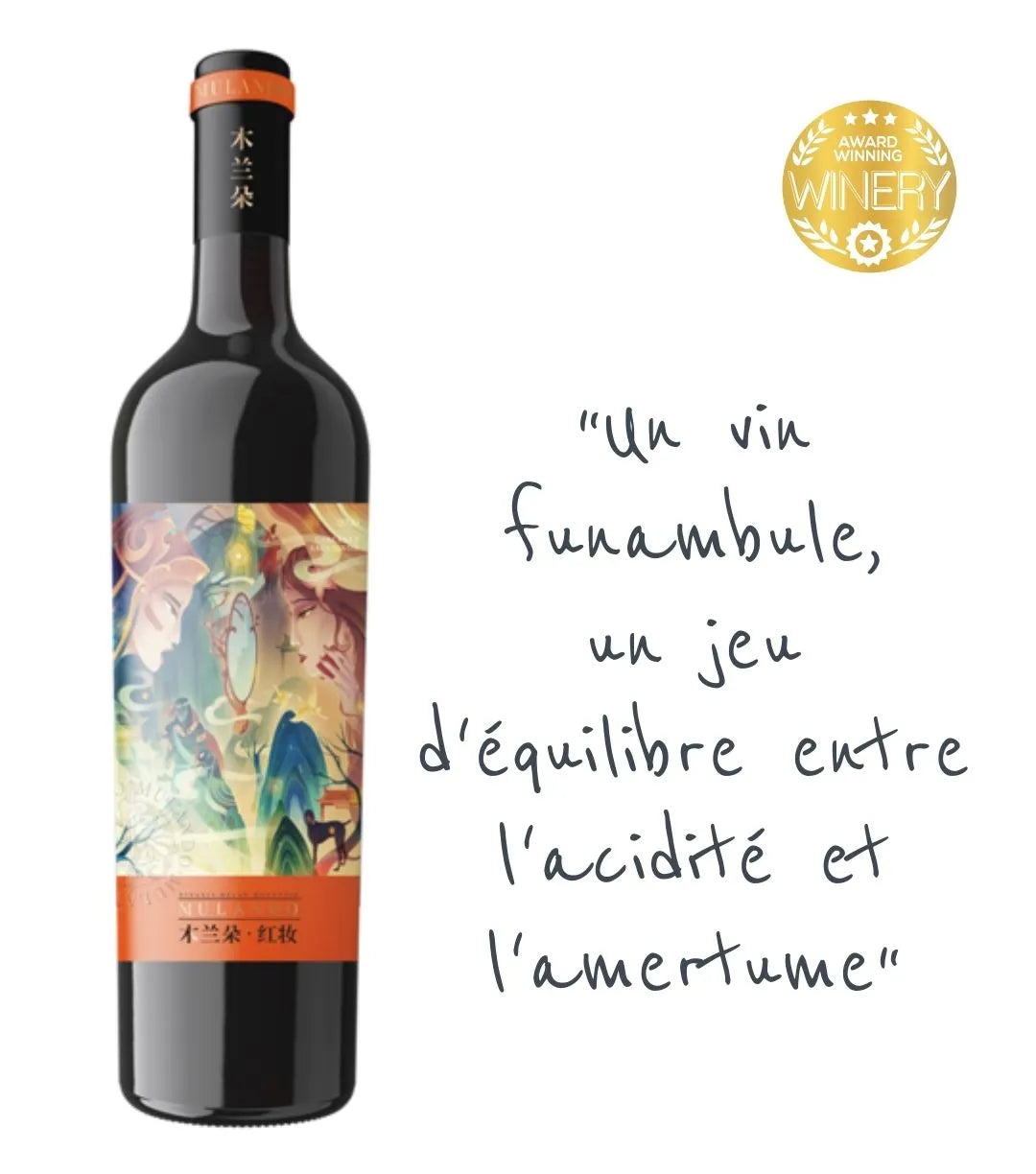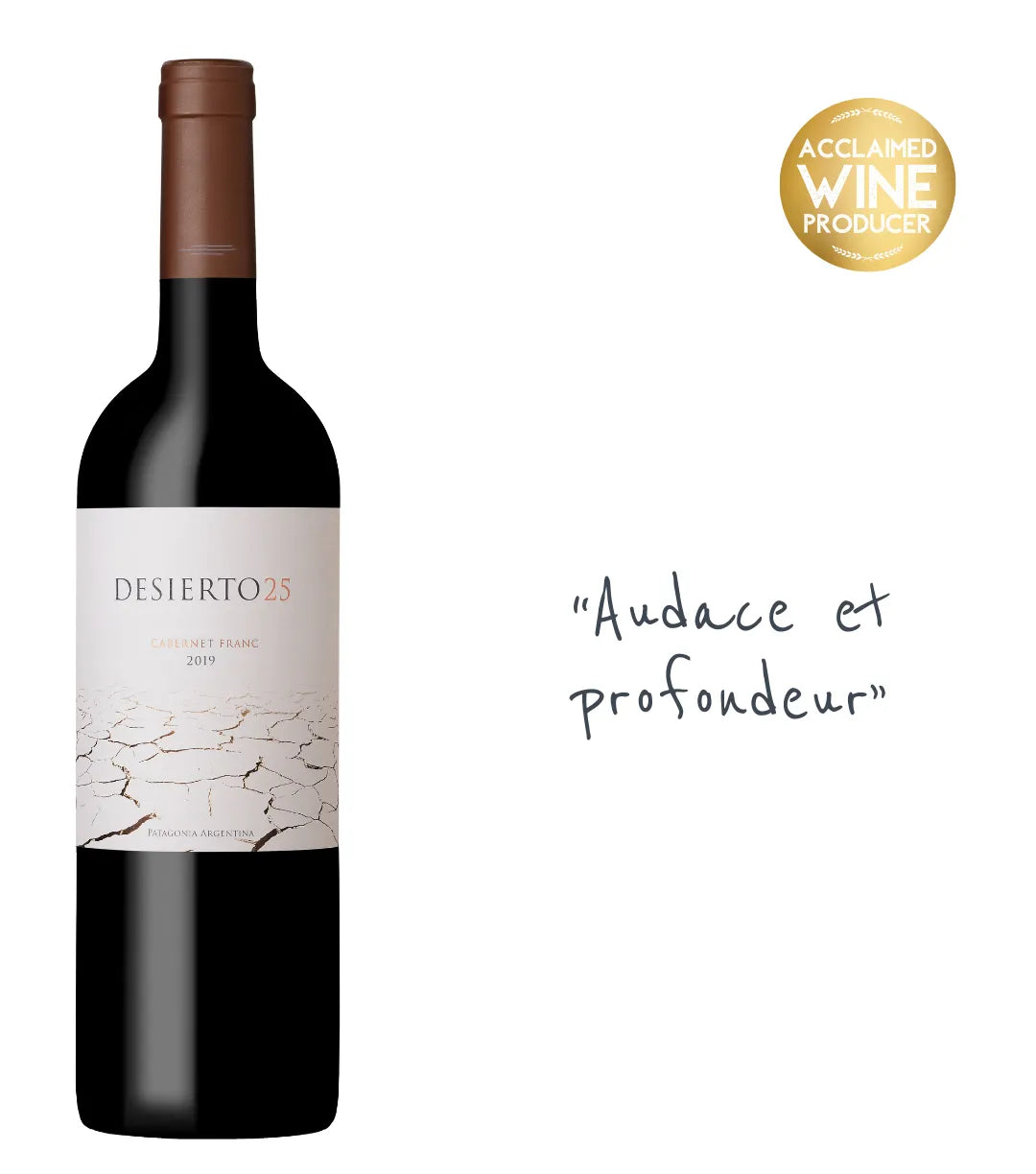
Cabernet Franc Wine
Cabernet Franc Wine
Cabernet Franc, the ancestor of Cabernet Sauvignon, is direct and simple yet far from bland. It pairs perfectly with a charcuterie or cheese board. On its own, it's silky, fresh, and balanced, featuring notes of blackcurrant, peppers, violet, and raspberry. When blended with Merlot, it becomes fuller-bodied. Cabernet Franc quenches your thirst without feeling heavy, and as it ages, it gains complexity and power, appealing to both amateur wine lovers and connoisseurs.

Ningxia Helan Mountain, China
Cabernet Franc Wine
Cabernet Franc is a noble grape variety often overshadowed by its illustrious descendant, Cabernet Sauvignon. However, it deserves particular attention for its unique qualities and significant contribution to global viticulture.
Origin
Originating in southwestern France, it was already being cultivated in the 17th century. Some wine historians believe it may have been introduced by the Romans. This variety is also one of the parents of Cabernet Sauvignon, born from a cross with Sauvignon Blanc. It stands out for its aromas of raspberry, green pepper, and violet, as well as its supple tannins, making it a light red wine appreciated for its freshness and drinkability.
Preferred Terroirs and Uses in France
Loire: A Tuffeau Terroir
In the Loire Valley, Cabernet Franc finds an ideal environment, particularly in the appellations of Chinon, Bourgueil, and Saumur-Champigny. The limestone soil, often composed of tuffeau, allows it to develop unparalleled aromatic complexity and freshness. These terroirs produce wines of great finesse, with notes of red fruits and spices, often with excellent aging potential. The best wines from this region are known for their elegance and balance. In the Loire, it can be vinified as a single varietal, offering wines with beautiful minerality and delicate tannic structure. These wines are characterized by aromas of cherry, raspberry, and sometimes pepper, evolving into notes of underbrush and leather with age.
Bordeaux: A Pillar of Blends
In the Bordeaux region, Cabernet Franc is primarily used in blends with Cabernet Sauvignon and Merlot to create the famous Bordeaux Blends. These wines benefit from the distinct qualities of each variety: the structure and tannins of Cabernet Sauvignon, the roundness and fruity aromas of Merlot, and the freshness and herbaceous notes of Cabernet Franc. Prestigious estates like Château Cheval Blanc in Saint-Émilion perfectly illustrate the importance of this grape in great Bordeaux wines. It brings finesse and complexity, balancing the intensity of other varieties and contributing to the longevity of the wines.
Use in Italy and New World Wines
Friuli: An Italian Adaptation
In Italy, this variety is primarily cultivated in the Friuli-Venezia Giulia region. Here, it is often vinified alone, offering structured wines with aromas of red fruits, pepper, and earthy nuances. The unique climate and terroir of Friuli allow Cabernet Franc to fully express itself, producing wines that rival those of the Loire in terms of quality and character. In this region, it is appreciated for its ability to reflect the terroir, offering wines with beautiful freshness and marked minerality.
New World Wines: Global Expansion
In the United States, particularly in California, it is increasingly recognized for its own qualities and its role in Bordeaux Blends. Californian wines often display remarkable aromatic intensity and great richness. Napa Valley and Sonoma County are regions where it thrives, producing wines with concentrated aromas of black fruits, pepper, and spices, with a well-defined tannic structure. Similarly, in Australia, it is used in both blends and single varietals, contributing to the diversity and quality of New World wines. In the Coonawarra region, for example, it is often blended with Cabernet Sauvignon and Merlot to create rich and complex wines with excellent aging potential.
Cabernet Franc demonstrates an incredible capacity to adapt to various terroirs and climates. Whether in Bordeaux blends, on the tuffeau of the Loire, in the soils of Friuli in Italy, or in the sunny vineyards of California, this variety continues to captivate light red wine enthusiasts worldwide. The best wines from this grape, whether from Chinon, Bourgueil, or New World wines, testify to the richness and diversity of this emblematic variety.
For more information, check out our list of grape varieties!









